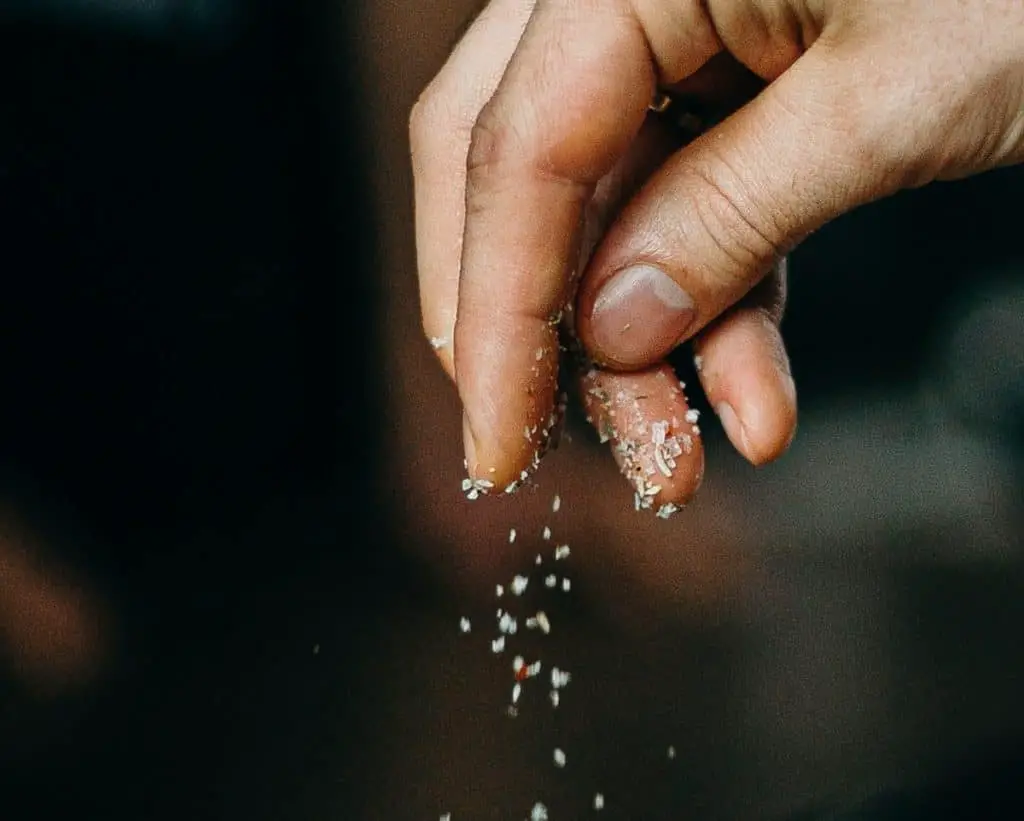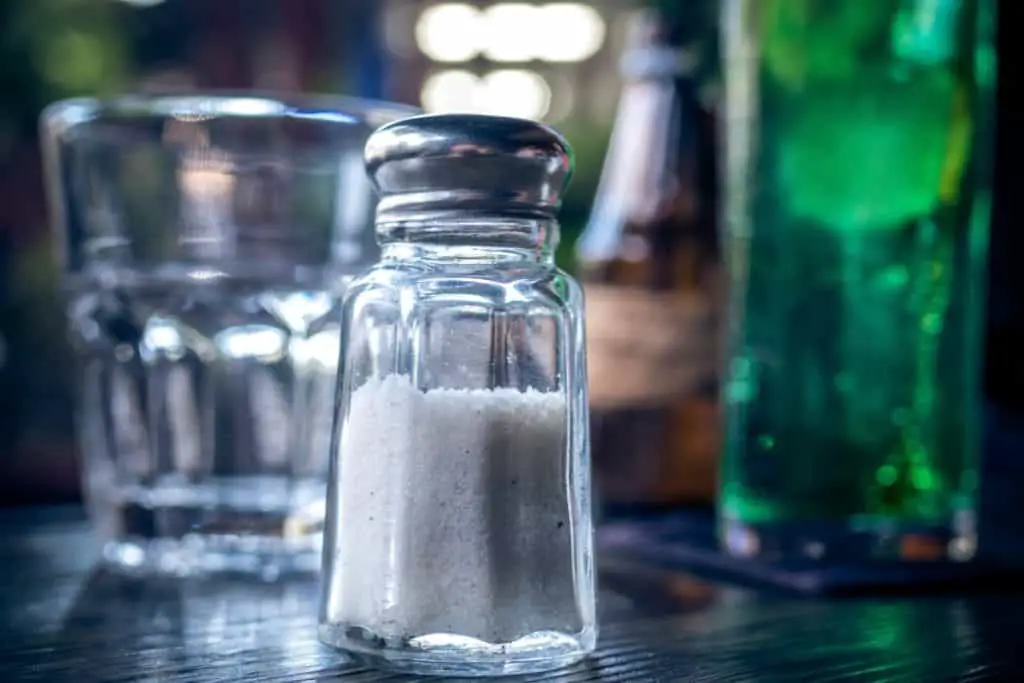‘Seriously? Salt in your Coffee?’
I get asked a lot of times what salt has to do with coffee and most importantly whether they should put in their cup. Can salt really reduce bitterness and improve your coffee’s flavor?
Table of Contents
The Science of Salt
But first we need to dive a little bit into the science of taste. So salt is considered one of the five basic tastes, which in itself is sort of a lie. It’s commonly said we taste Salt, Sour, Sweet, Bitter and, Umami- but there are other flavor effects that take place in the mouth as well (think spicy or astringent foods!).
But that’s a bit complicated and let’s consider salt specifically. Your tongue has a bunch of taste receptors or taste buds on it. When you taste salt, these receptors detect sodium ions across the membrane and you experience saltiness.

But there’s an even more interesting synergy present. Saltiness can actually amplify sweetness and also mitigate or reduce bitterness.
When it comes to researching saltiness and bitterness, one of the compounds often tested is caffeine. Caffeine rarely taste on its own but it does contribute to coffee’s overall bitterness. If you ever had decaf coffee, you know that even without caffeine, coffee is bitter.
Should I put salt in my coffee?

It does seem that salt does impact lots of different kinds of bitterness. So does it stand to reason that we should be putting salt in our coffee all the time?
One of the pleasures of coffee is having it with the right level of bitterness- much like beer or chocolate. Some bitterness is pleasant when it’s balanced by sweetness and acidity. This yields a more complex and enjoyable cup. You don’t want to use salt to neutralize this desirable bitterness.
Consider salt to be an addition like cream or sugar: for some coffees, it can be a welcome addition- but for others, it obscures the true flavor of the cup. If you use salt for excellent single origin coffee, for example, you likely won’t taste the true notes endemic to the origin.
We sought to test-drive saltiness in coffee in two different scenarios: an V60
Test #1: Cup Brewed with V60
We initially brewed a cup using our V60 and added salt to the brewed cup. Some say it’s better to put salt along with ground coffee than putting it directly into the cup but, when using a small amount of salt and a pour over, the amount of salt you are actually dosing into your cup is very hard to measure.

So, for this “experiment”, I used saline solution of 20% salt to 80% of water with exactly 0.2 grams of salt. I then took two cups of the V60 brewed coffee, added 0..5 grams of saline to the first cup and gave it a good stir. The other cup served as a control.
The undosed cup was a bit harsh from an extraction time that was probably longer than it should have been.
Afterwards, I took a sip from the cup with the salt. The cup was actually better- softer and less harsh! But, it did have a slight saltwater flavor to it. I was really surprised by both of these outcomes as the amount of salt used was quite small. The apparent lesson here is that you can/should use a very, very small amount of salt; even a pinch may be too much!
Now, I wanted to look at a different, more “everyday” coffee to observe the effect of salt. Can salt turn your more average cup of Joe into something a bit more palatable? For this we turned to a cup of Nescafé Original.
Test #2: Cup of Nescafé Original
For the Nescafé Original, I prepared two cups with 0.8 g of coffee to 200 ml of water. I then added 0.3 g of the saline solution to one of the cups.
I first tasted the control cup of Nescafé Original. It was quite bitter- an overall unpleasant cup of coffee!
I then tried the cup with the salt and I was quite surprised! Even with 0.3 g, it was significantly more palatable. After this first test, I upped it to a total of 0.6g of saline. The result was even less bitter! I have to say that salt really made a difference for the cheaper, more bitter cup of Nescafé Original.
Things to keep in mind
The added salt served to mitigate or reduce my perception of bitterness in each cup while also slightly improving the texture. The flavor was slightly different – a mild saltwater taste. However, many of the same notes of the V60 brew remained.
Keep in mind that, for our 200 g cup, we used at most 0.2 g of salt. This may be even less than a “pinch” and 0.2g of salt can be a bit hard to measure out. It can be even harder to measure if you are trying to use larger grained kosher or sea salt.
I’d recommend just using table salt. It’s easier to measure and other salts won’t provide any additional benefit.

Conclusion
Adding salt to coffee isn’t actually a new trick; it’s actually a very old and common addition in many different countries, particularly the Scandinavian countries.
Keep in mind that your milage may vary on this. For some, the suppression of bitterness doesn’t happen as significantly as for others, so don’t be weirded out if this trick doesn’t work for you. Most people, however, do experience a bitterness reduction and so it is definitely worth a try.
What are you waiting for? Grab you salt shaker and try brewing a cup!

